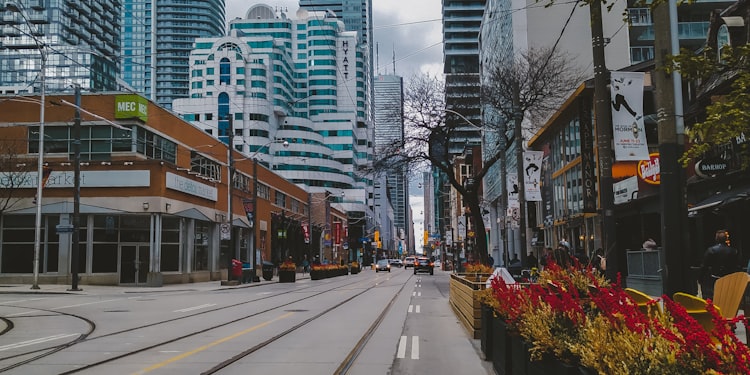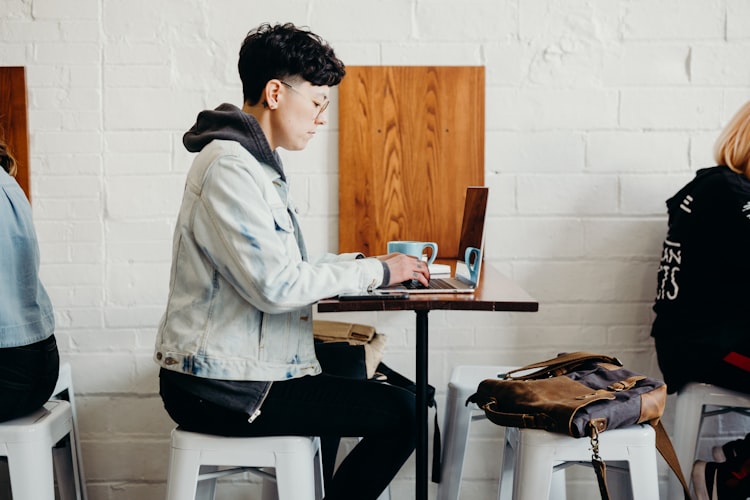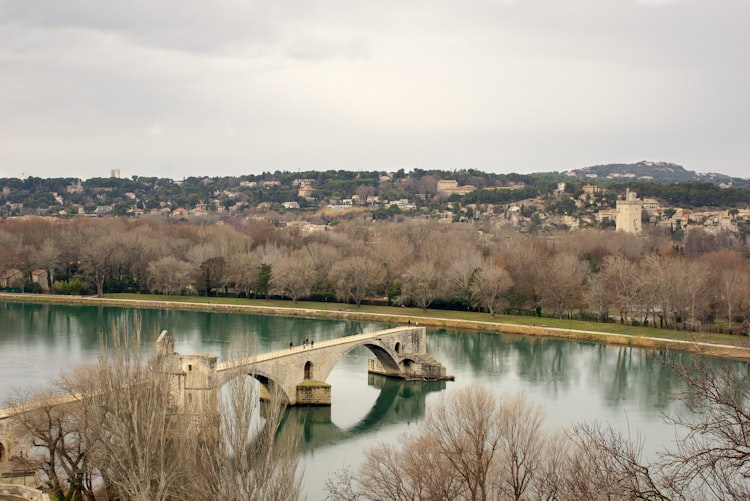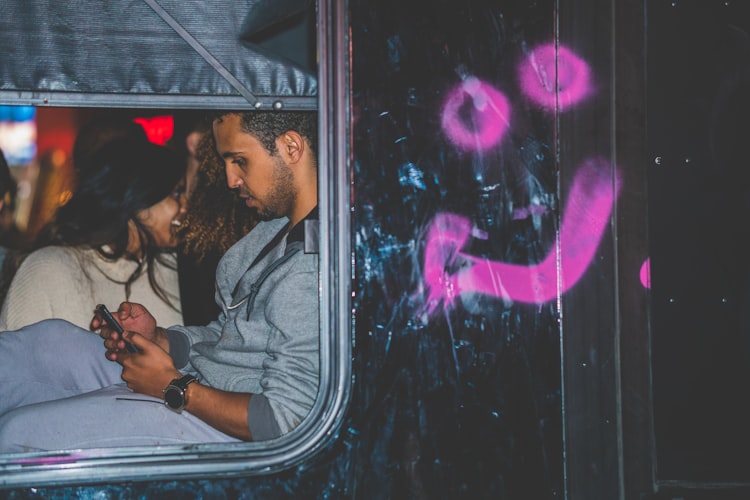Learning The Steps of The Sidewalk Ballet

I recently watched the documentary Citizen Jane, thanks to my local library. The citizen in question was Jane Jacobs, a pioneer of the New Urbanism movement, a community activist, and a writer. She died in 2006 in Toronto, but not before making her mark in New York City, Toronto, and other old-growth cities.
Jane Jacobs is probably an obscure figure for most. I had heard mentions of her name in the Kneeling Bus newsletter and Eric O. Jacobsen’s Three Pieces of Glass, but I wasn't familiar with her work. Before having any intention of reading her more closely, I experienced what she calls “the ballet of the good city sidewalk.”
It was sublime.
I went to get some take-out from a nearby restaurant, which was part of a new pandemic routine to buoy neighbourhood businesses. This was shortly before Montreal’s second COVID-19 lockdown, around the end of September 2020. On my way, I passed an unusual number of people. No one gathered for anything specific, but there seemed to be a lot of individual activity happening in concert.
A group of three chatted on a street corner. A man with a small dog yelled to someone entering a small apartment from his stopped car. A couple walked with a stroller and toddler across the street. I continued on, thinking mostly about the Vietnamese food I’d be eating soon.
I arrived at the restaurant just as the order was getting packed. “Matt?” The masked owner asked, and I replied “Yes, sir!” Previously I’ve been called Max and Marc because I’m often misunderstood when I speak French on the phone, but this little thing — getting my name right, having learned it — felt special. Not in a big way. It was a small but special thing. I paid, told him the food smelled great and reentered the activity of the sunset street.
At this point, I sensed something was up. The task before me—bringing take-out home—was so ordinary, so easy to categorize as an inconvenience (despite being a labour-saving option vis-a-vis cooking). Yet, since then, I’ve longed to have a similar experience. It was as if I was sharing in something. I was participating in the action of something like a festival, one of the many activities which have been conspicuously absent from Montreal in 2020. Alert now, I continued home along a slightly different route than I had come. I was eager to see what else my little “coin du quartier” had in store for me.
I encountered another movement in the dusky dance of local life. At a quiet four-corner intersection, I passed several kids playing in the street. They kicked a ball around and one, referee-like, circled the smaller kids on a glowing hover-board. Across from them, someone entered a dépanneur, ringing its door-mounted bell. Above the dep, a woman hung out the second-storey window. She spoke loudly to a man with his dog on the sidewalk below—I cannot guess the exact nature of their relationship. I passed through, a participant by my mere presence. To someone else observing, perhaps the woman in the window, I must’ve added something to the scene. Carrying take-out on foot places me in the neighbourhood. It may be I called to mind someone’s favourite restaurant. Perhaps I reminded watching eyes behind a curtain that sidewalks aren’t just places to dump trash and park cars.
Whatever anyone else thought, I knew I was part of something special, just for a moment. Unremarkable, maybe, because of how novel distractions have displaced common pleasures in our FOMO culture, but walking repaid my attention nonetheless.
Here’s how Jane Jacobs describes what I participated in that warm September evening.
Under the seeming disorder of the old city, wherever the old city is working successfully, is a marvelous order for maintaining the safety of the streets and the freedom of the city. It is a complex order. Its essence is intricacy of sidewalk use, bringing with it a constant succession of eyes. This order is all composed of movement and change, and although it is life, not art, we may fancifully call it the art form of the city and liken it to the dance – not to a simple-minded precision dance with everyone kicking up at the same time, twirling in unison and bowing off en masse, but to an intricate ballet in which the individual dancers and ensembles all have distinctive parts which miraculously reinforce each other and compose an orderly whole.
She goes on to describe the movements of the ballet throughout the day, which you can read here.
What Jacobs describes is, of course, not happening quite the same way during pandemic lockdowns. But what I saw, what I briefly danced through, was a vision of functioning city sidewalks—living neighbourhoods. What made me most sad is that this ballet was something I rarely experienced pre-pandemic. Walking as transportation in North America, according to Antonia Malchik, has been declining for nearly a century, but is this progress? She writes “there are vast blankets and folds of [North America] where the ability to walk – to open a door and step outside and go somewhere or nowhere without getting behind the wheel of a car – is a struggle, a fight. A risk.” It’s about more than transportation choice, however. We foreclose on certain interactions and habits, especially community-strengthening ones, by abandoning the sidewalks. Walking and neighbourhoods that support it have been “intentionally designed out of our lives.” Jacobs believed this made our communities less safe, because with fewer public relationships, fewer “eyes on the street,” we’re inclined to view neighbours as strangers. A risk. Like many of us, I’m deeply biased towards seeing my neighbours and neighbourhood as obstacles at worse and inconsequential at best. Why wouldn’t I? After all, a world of goods and services can now be delivered to the front door.
But that’s not really what we want, it seems. It’s the lifestyle we’re sold by those who have to gain from it, the lifestyle of powerful people whose neighbourhood is nowhere, whose playground is the wide world itself.
A smaller, more limited vision of common life is not only possible; it’s preferable. A friend in Winnipeg described for me another scene, adapted for COVID-19 but normally a regular occurrence. His next-door neighbours organized a socially-distanced block party where one neighbour’s band played, and everyone enjoyed the show from their lawns. “It was great,” he said, and I imagine he was telling the truth. Another friend in Montreal had similar things to say about the presence of neighbours tobogganing at a local hill. Are Instagram concerts more valuable? They’re easier, certainly, and less demanding. The local action above required preexisting relationships; it required prior investment. Digital community scales nicely because it’s rootless, which is also why it so often fails to satisfy.
Jacobs, I believe, has the right of it. Our oldest cities, with their endless human-scale opportunities for relationship and responsibility, have something to teach us. Jacobs called sidewalk life the art form of the city, but not “a simple-minded precision dance.” Rather, local life is an “intricate ballet” in which the individual parts, our neighbours, “miraculously reinforce each other and compose an orderly whole.” The neighbourhood—this orderly whole—can not be ordered online, cannot be shipped for free; we must re-learn the steps.





Member discussion